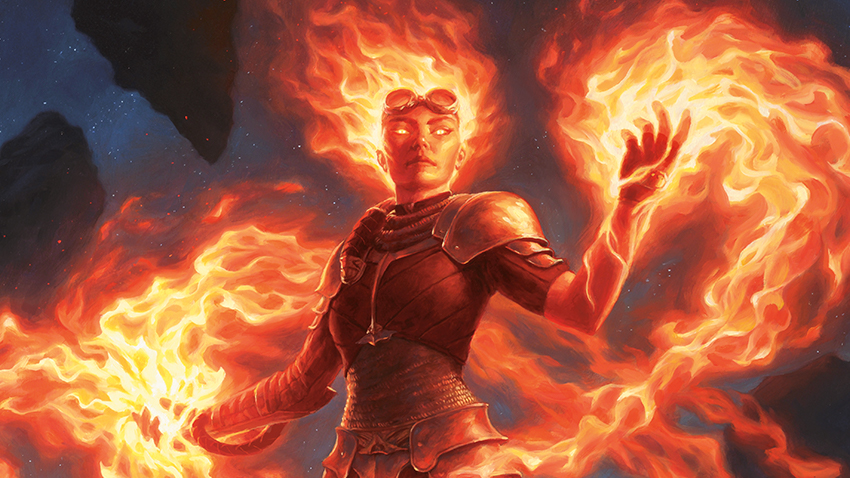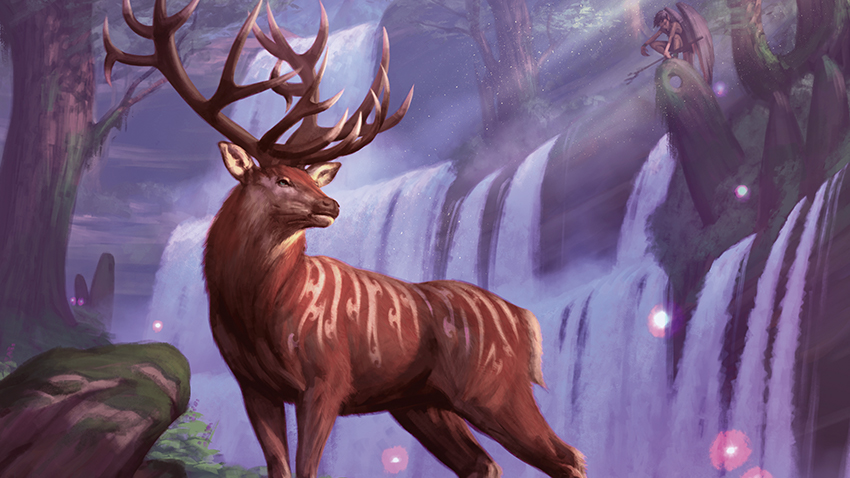Play Design Lessons Learned
Hey everyone, my name is Bryan Hawley, and I lead the Play Design team for Magic. Today, we announced some Standard bans that you can read about here. Additionally, this past year has had a lot going on, so on behalf of Play Design, I'd like to take a bit of time to walk through where we are, how we got here, what we've learned, and where we're going next.
Where We Started
For the period starting in Battle for Zendikar and going through Core Set 2019, we—what was then called R&D—made a conscious effort to gradually power down our marquee sets and, by extension, the Standard format. Our primary goal with that direction was to open up design space, mostly in higher-cost cards and in effects typically not impactful enough for competitive play.
We succeeded in those goals, but there were costs that outweighed the benefits. Our main booster sets should be for everyone, and at that lower power level, if you didn't play Standard, we weren't really making cards for you. On top of that, within Standard, the lower power level meant the format was more sensitive to cards that missed on power level; a lot of those Standard formats were badly warped by that fact. Cards like Smuggler's Copter and Gideon, Ally of Zendikar were dominant in ways they wouldn't be if the rest of the format met a higher bar.

F.I.R.E
Around the time we were designing Guilds of Ravnica, largely in reaction to the points above, we adopted a philosophy we call F.I.R.E.
Magic should be
Fun
Inviting
Replayable
Exciting
This philosophy spurred a large number of changes in how we design Magic, and shifted the way Play Design approached our work.
First, we intentionally powered up our marquee sets (and therefore Standard) from Guilds of Ravnica through Throne of Eldraine. We took this path for a variety of reasons. We think Standard is more fun at a slightly higher power level. It's easier to make cards relevant to more players without making bizarrely engineered cards laser-focused on a specific niche that may or may not actually get there (looking at you, Alpine Moon). Also, while we'd opened up design space at higher mana costs, we realized we'd lost design space in the wackier strategies because a lower-powered Standard couldn't absorb them as easily.
Our intention was that this powering up was gradual over the course of the year, and afterwards, we would level off at a Standard power level somewhere in the range of Standard circa Return to Ravnica and Theros. The strength of a Standard format is such a nebulous concept that we don't try to rigidly and rigorously define it, but that era is a good ballpark description of our aim.
Second, we expanded back into riskier space for Constructed that we'd previously engaged with but shied away from or severely powered down during the BFZ-M19 era, namely low-cost planeswalkers, color hate, and open-ended combo cards. We learned a great deal about all of these, but let's set those aside for a few paragraphs and come back to some of these.
The Buck Stops Here
Outlier cards aside, Throne of Eldraine is in range for our new normal as far as marquee set strength is concerned. It's on the high end of that range, but within it. Our hope is the power level of the coming sets are in the same league, and we do not intend to keep raising the power level of our marquee sets over time. Different effects will be relatively stronger or weaker set to set and format to format, but our intention is to hold around this level of strength in our marquee sets going forward.
Oko, Thief of Crowns, however, we missed on. There's no question that he is much stronger than we intended. There's lots of reasons he wound up as strong as he did, and there's not a clean and easy story to tell. The story is rooted in the fact that Play Design is (and needs to be) a design team, not simply a playtesting team.
We do a great deal of playtesting, and we are ultimately responsible for the power level of cards, but the result of any playtesting needs to be choosing what power level things should be. We design and redesign cards, change play patterns, and tackle design challenges at the card, deck, mechanic, or format level to try and make our Constructed formats play well. This could (and likely will be) an article of its own, but for now we'll focus on what that means for Oko specifically. Alongside power level, we were working on different structures for the Food deck, moving planeswalkers around on the mana curve to react to shifting costs elsewhere in the file, and churning through a variety of designs to try and find something that had any hope of being a fun Constructed card. Earlier versions of Oko had most of their power tied up in (a much broader) stealing ability, which was even less fun for the opponent than turning them into Elk.
Ultimately, we did not properly respect his ability to invalidate essentially all relevant permanent types, and over the course of a slew of late redesigns, we lost sight of the sheer, raw power of the card, and overshot it by no small margin.
ELD's general power level is indicative of our aim for the new normal, but Oko, Thief of Crowns is not.

Lessons Learned
As we've shifted into the F.I.R.E. philosophy, we've seen and learned a lot. In this section, I'd like to talk through a grab bag of many of the things we've learned and where we're taking those learnings going forward. One note of caution, though: given that we're often working far into the future, it may take some time to see the impact of these efforts.
Coming out of an era with green being at times borderline unplayable by virtue of its inability to proactively interact with opposing creatures, we tried in the last few sets to lean into green's ability to fight enemy creatures. As we see the impacts of that, it's leaving green's suite of effects a bit too complete (which is separate but related to its raw strength). Looking at the color pie holistically, it steps into a hybrid creature/removal space usually occupied by white (but does it better). We'll be looking to narrow down green's mechanical expression slightly and investigate other ways to let green navigate boards littered with opposing creatures.
Three-mana planeswalkers are riskier space than we were giving them credit for, even when we were giving them a lot of credit. We've seen some that occupy fun and healthy roles (Domri, Anarch of Bolas and Gideon Blackblade spring to mind), but we've also seen several invalidating large swaths of cards. For example, Teferi, Time Raveler invalidates most instants and Oko, Thief of Crowns invalidates most permanents more expensive than himself. We'll likely continue making three-mana planeswalkers, but sparingly, carefully, and with the question "if this planeswalker is strong, what could it push out of the environment?" at the forefront of the conversation.
In particular, we were leaning too hard on planeswalkers' ability to be attacked and how much less reliable that counterplay is on three-mana planeswalkers. The further we deviate from the basic four- and five-mana planeswalker loyalty schemes that we've explored many times now, the more careful we need to be about rechecking our assumptions about how they impact the game. Beyond that, as soon as we're able, we'll be including more and more varied cards to provide avenues for planeswalker interaction outside the combat step.
The nature of designing Magic is that we're never sure precisely how the metagame will turn out, so we design in a variety of probabilistic shots to provide safeguards and counterplay against things that may or may not show up. We've seen some of those safeguards end up low (Ravager Wurm for nonbasic lands), and some end up high to the point of becoming the problem themselves (Veil of Summer). There isn't a clear answer to threading this needle, but our first clear path forward will be taking a wider variety of less-aggressive shots, aiming for more playable worst cases and less punishing best cases.
With Core Set 2020, we tried an experiment of specifically designing cards with the intention of calling back to the previous year's themes. Our goal was to make eight-set Standard, which often represents a lull given the low amount of change, more novel and fresh in a way that didn't incur as much risk of dominating the following year of Standard. We saw some positives in terms of new and interesting content, but with so much of Standard comprised of those decks, the format taxed players too heavily to acquire cards for a very short period of time. On top of that, those cards still incurred most of that risk; Field of the Dead was specifically designed to hook back to Scapeshift and hit at a fairly appropriate level in eight-set Standard but proved dominant after rotation even without Scapeshift itself. We'll continue looking for opportunities for our sets to blend and synergize across years, but we're pulling back significantly on this specific approach and aiming for those decks to be a lower percentage of the metagame.
Tl;dr
Our primary goal is, and always has been, to make our play environments as fun as possible. Part of that has been reverting our decision to power down Standard, which we did gradually over the course of the last year. With Throne of Eldraine, we hit the high end of what we're aiming sets to be (outlier cards aside), and our plan is to level out our sets at roughly this power level going forward. We've stumbled in a few places, but we've been watching, listening, and learning from those mistakes.
